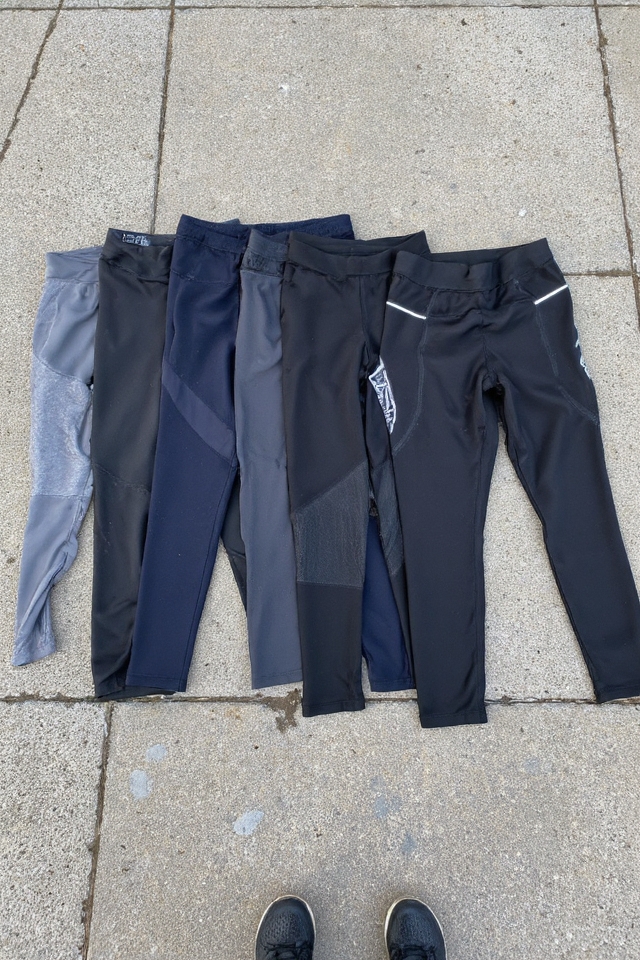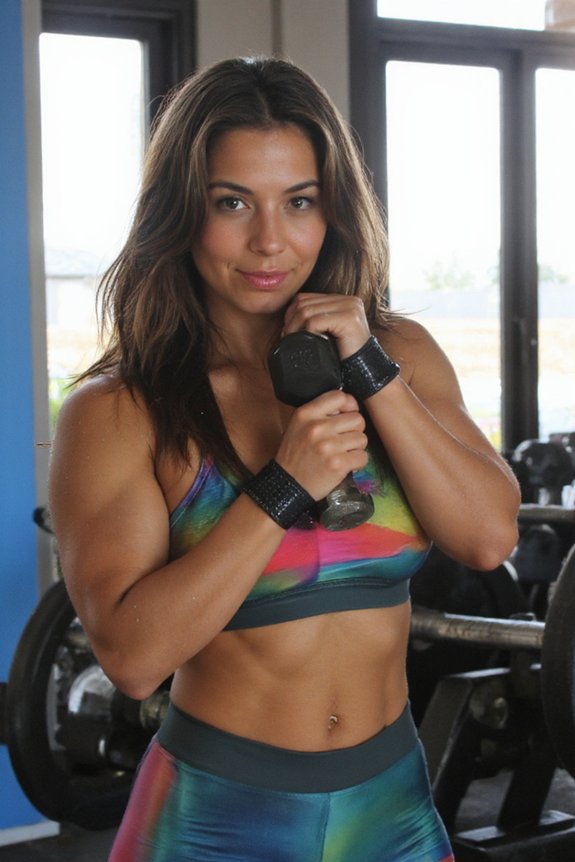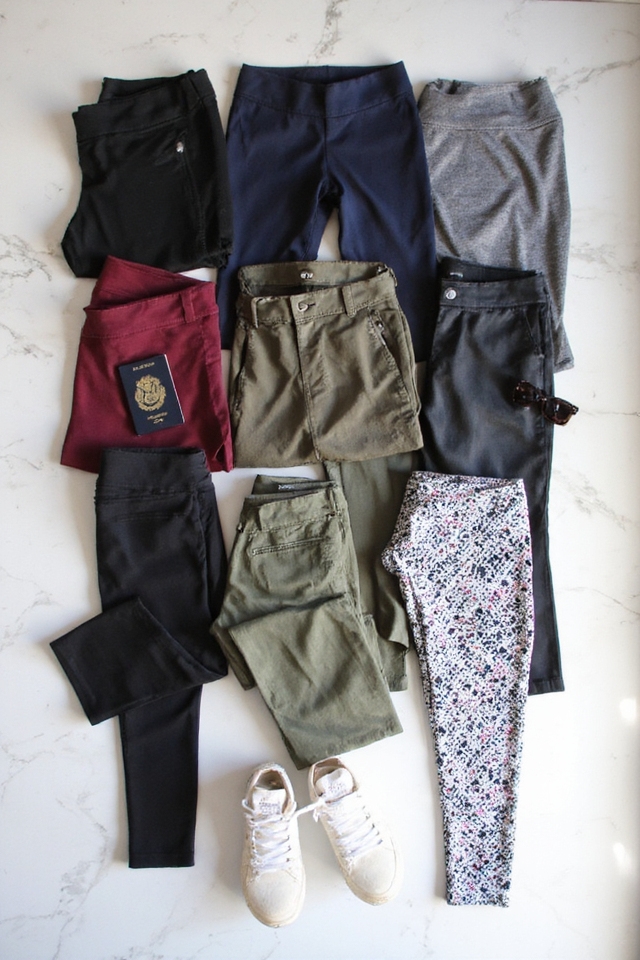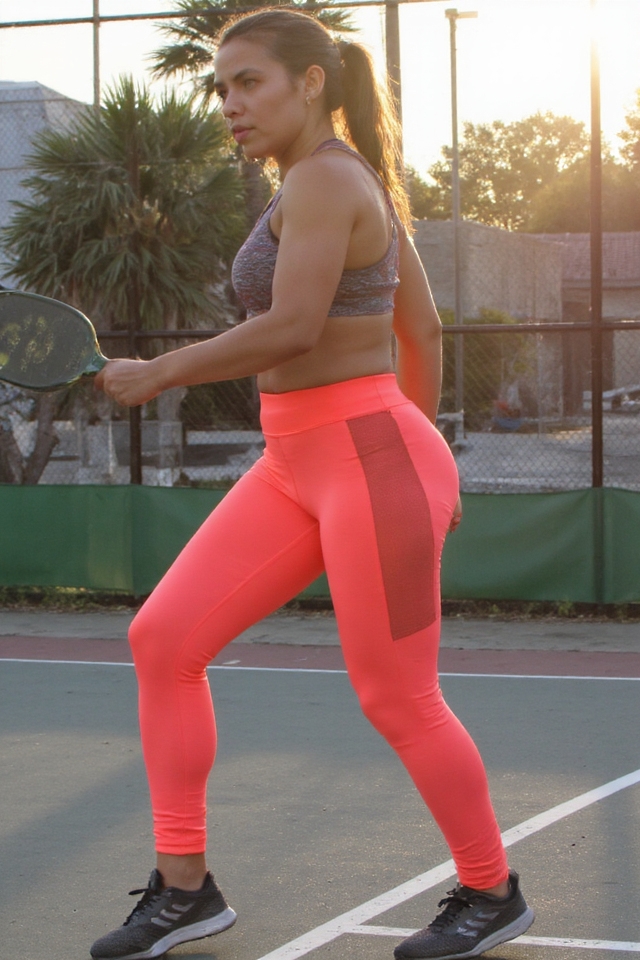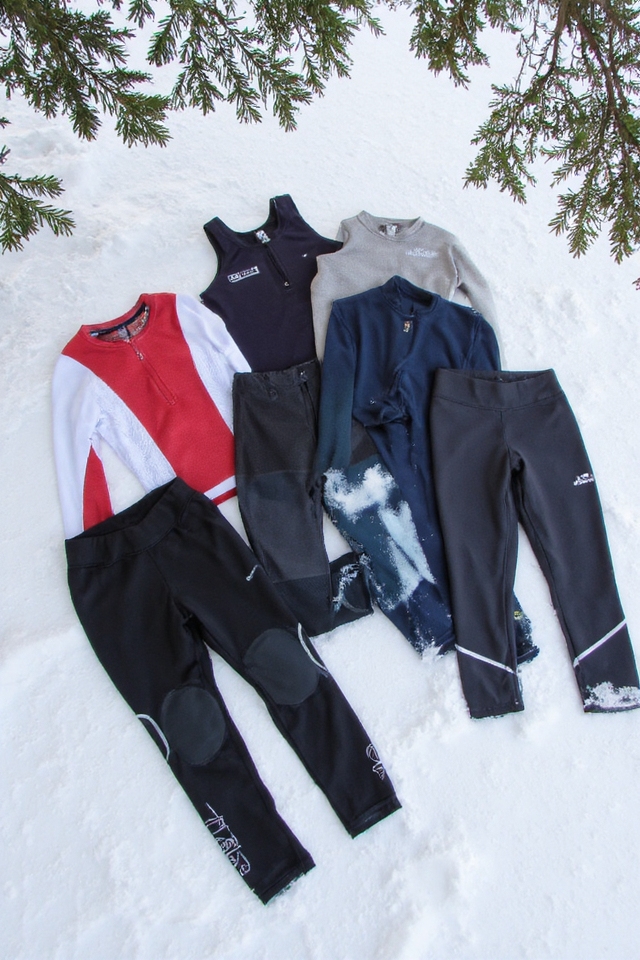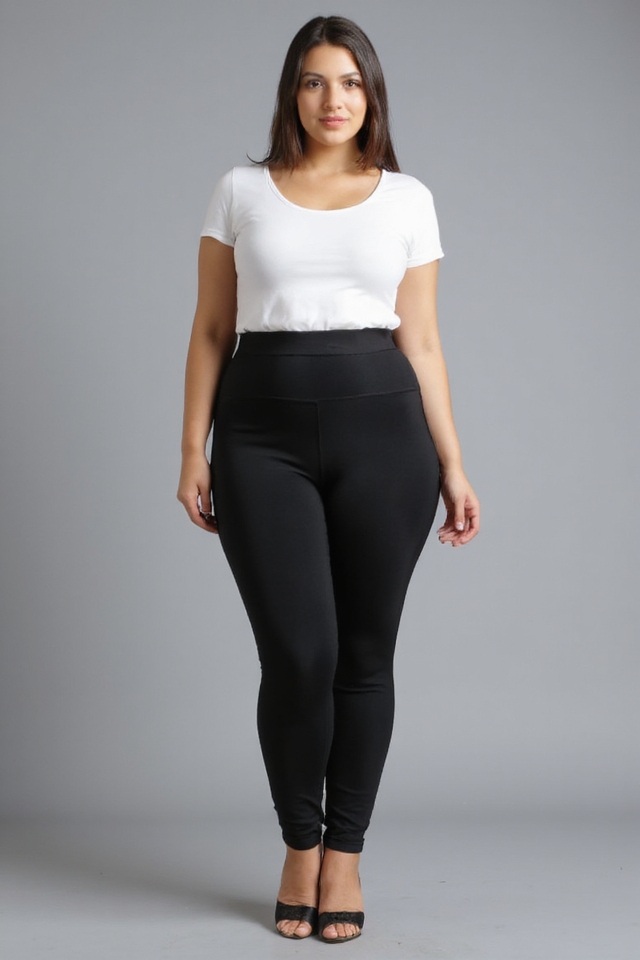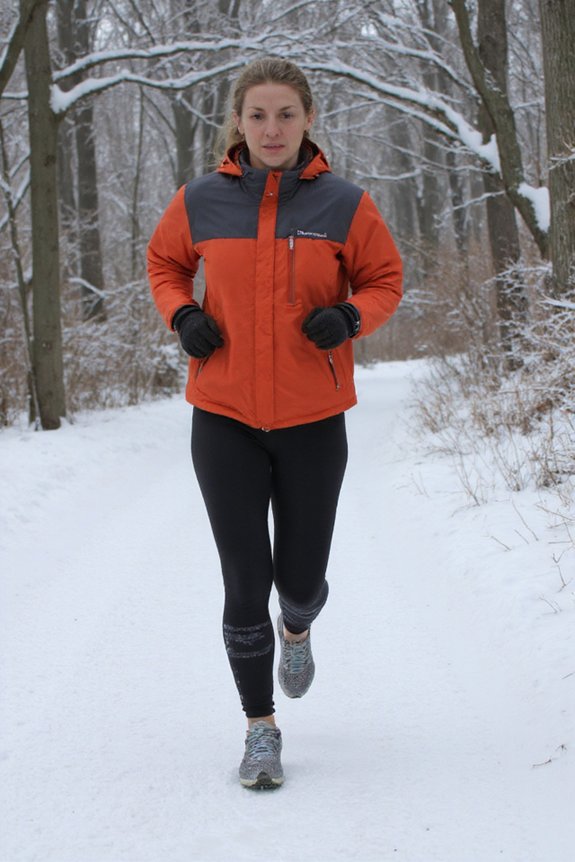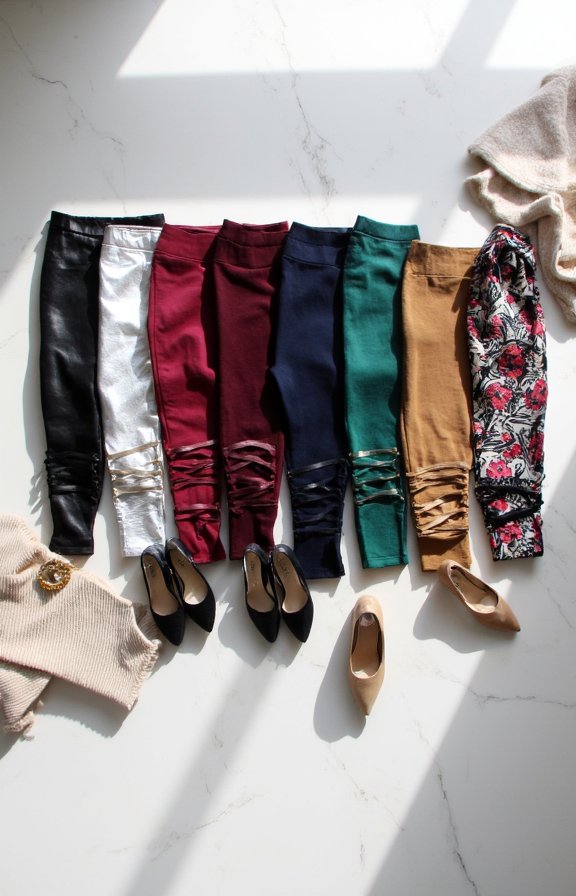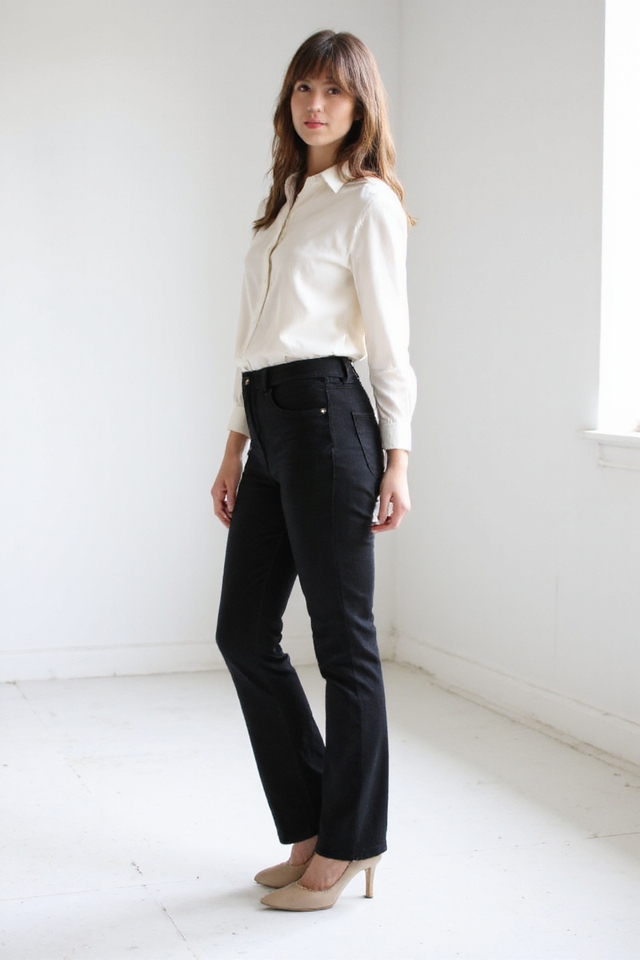You’ll crush your half marathon with the right leggings working in your favor. Compression styles boost circulation from ankle to hip, while high-rise options stabilize your core for better breathing. Mid-rise designs offer unrestricted movement, and ⅞ lengths keep you cool in warm weather. Don’t overlook mesh cut-outs for maximum airflow, pocketed versions for storing gels and phones, or reflective pairs for dawn training sessions. Each style tackles specific performance challenges to help you cross that finish line stronger.
Compression Leggings for Enhanced Blood Flow and Muscle Support
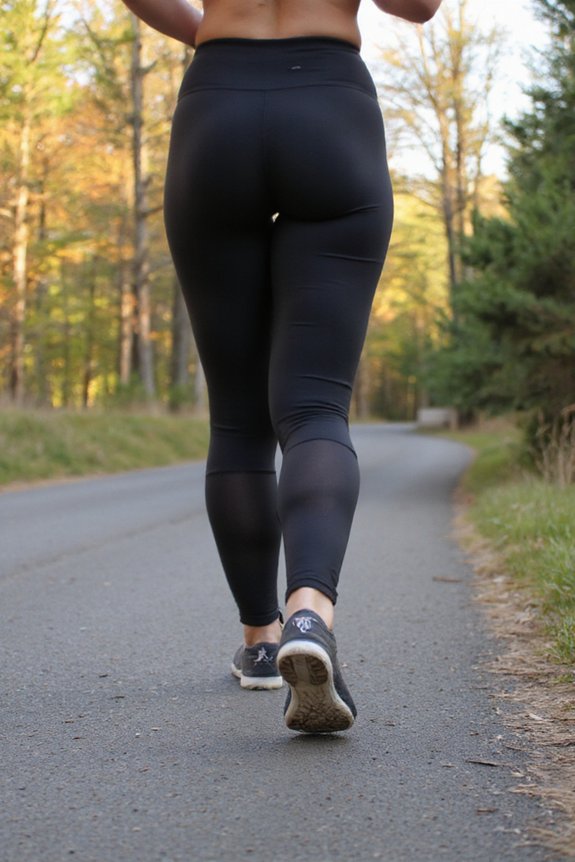
When you’re pushing through those grueling miles, compression leggings work like your personal support system, actively boosting blood circulation from your ankles all the way up to your hips.
You’ll feel that graduated pressure squeezing your calves and thighs, reducing muscle vibration with every stride.
They’re delivering oxygen-rich blood exactly where you need it most, keeping your legs fresh and fatigue at bay during intense training sessions.
High-Rise Leggings for Core Stability and Secure Fit

High-rise leggings take your half marathon game up a notch by wrapping your entire midsection in supportive fabric that stays put mile after mile.
You’ll feel the difference in your posture and breathing as the wide waistband engages your core muscles.
No more mid-run adjustments or distracting roll-downs.
These performance champions lock everything in place, letting you focus solely on crushing those 13.1 miles.
Mid-Rise Leggings for Freedom of Movement and Versatility

Three key benefits make mid-rise leggings the sweet spot for runners who crave both performance and comfort.
They’ll sit perfectly at your natural waist, eliminating digging or rolling.
You’ll get unrestricted hip movement for those long strides, plus they’re versatile enough to pair with any running top.
The balanced coverage means you’re supported without feeling constricted, making them ideal for distance running.
⅞ Length Leggings for Temperature Control in Warm Weather

As temperatures climb during your half marathon training, you’ll discover that cropped and capri-length leggings become your secret weapon for staying cool.
They’ll expose your calves and ankles to cooling breezes while still providing muscle support where you need it most.
Choose moisture-wicking fabrics in lighter colors that reflect heat, and you’ll maintain ideal body temperature throughout those grueling miles.
Mesh Cut-Out Leggings for Maximum Breathability During Long Runs
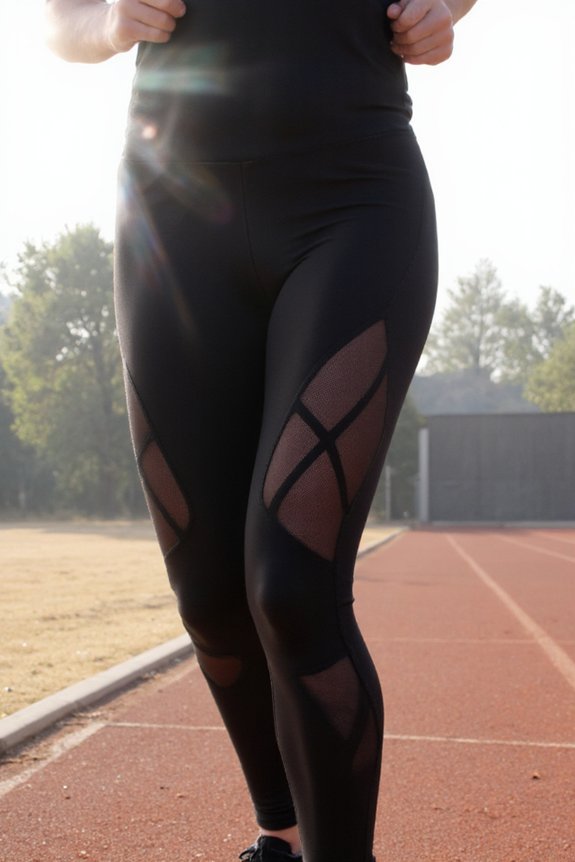
When you’re pushing through those final miles, mesh cut-out leggings deliver the ultimate cooling solution for overheated muscles.
Strategic mesh panels along your thighs and calves create airflow channels that regulate temperature brilliantly.
You’ll appreciate how these ventilated zones prevent sweat buildup while maintaining compression support.
The cut-out design isn’t just functional—it’s sleek, modern, and race-ready for your half marathon journey.
Pocketed Leggings for Convenient Storage of Race Essentials

Breathability matters, but storage might matter even more during your half marathon.
You’ll need pocketed leggings with deep side seams, waistband compartments, and thigh panels for your phone, gels, and keys. Choose compression styles with reinforced stitching around pocket edges. They won’t bounce or sag when loaded.
Look for moisture-wicking fabrics with flat-lock seams that prevent chafing against stored items during those essential miles.
Reflective Leggings for Safe Training in Low-Light Conditions
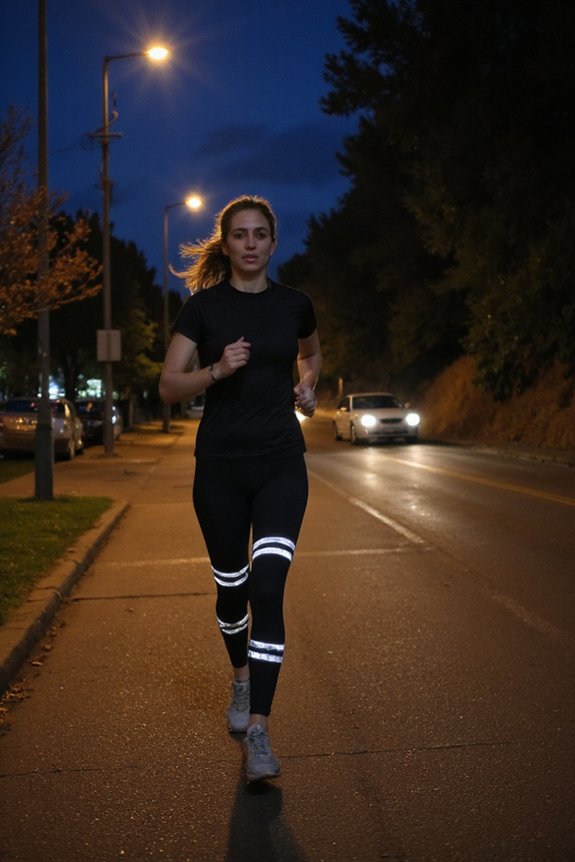
Early morning runs and evening training sessions demand reflective leggings that keep you visible and safe.
You’ll love how strategic reflective strips catch headlights without compromising style. Look for designs with 360-degree visibility—think side seams, back calves, and logo placements.
They’re lifesavers when you’re logging miles before dawn. Choose subtle patterns that won’t clash with your favorite running tops while maximizing safety.
Frequently Asked Questions
How Do I Choose the Right Legging Size for Optimal Performance?
You’ll want leggings that fit like a second skin without restricting movement. Measure your waist and hips, then check the brand’s size chart – they vary wildly.
The waistband should sit snugly without digging in, and there shouldn’t be excess fabric bunching at the knees or ankles.
Do a squat test in the dressing room – if they’re see-through or sliding down, size up. Perfect-fitting leggings move with you, not against you.
What Fabric Materials Are Best for Moisture-Wicking During Half Marathons?
You’ll want fabrics that pull sweat away from your skin fast.
Look for polyester blends, they’re champions at moisture management. Nylon-spandex combos work brilliantly too, keeping you dry while letting your skin breathe.
Skip cotton completely – it traps moisture and gets heavy. Merino wool blends are fantastic for cooler races, naturally odor-resistant and quick-drying.
Check for mesh panels in high-sweat zones like behind the knees for extra ventilation.
Should I Wear Underwear Beneath Compression Leggings While Running?
You’ll want to skip underwear with compression leggings – they’re designed to be worn solo.
Modern running tights feature built-in gussets and flatlock seams that prevent chafing. Underwear creates bulk, traps moisture, and causes uncomfortable friction during long runs.
If you’re concerned about coverage, choose leggings with double-layered fabric in key areas.
Trust the technology – quality compression leggings provide all the support and protection you need for race day.
How Often Should I Replace My Running Leggings for Best Results?
You’ll want to replace your running leggings every six to twelve months, depending on how often you train.
When the fabric starts pilling, losing elasticity, or showing wear in high-friction areas like the inner thighs, it’s time for new ones.
Check for thinning material, loose waistbands, and faded compression zones.
If you’re running four times weekly, lean toward six months.
Quality leggings last longer, but performance definitely drops with worn-out pairs.
Can I Machine Wash Performance Leggings Without Damaging Compression Properties?
Yes, you can machine wash your performance leggings, but you’ll need to be careful.
Turn them inside out first, then wash in cold water on a gentle cycle.
Skip the fabric softener – it’ll damage the compression fibers.
Don’t use hot water or high heat drying either. Instead, air dry them flat or hang them up.
Following these steps will keep your leggings’ compression properties intact for months.
